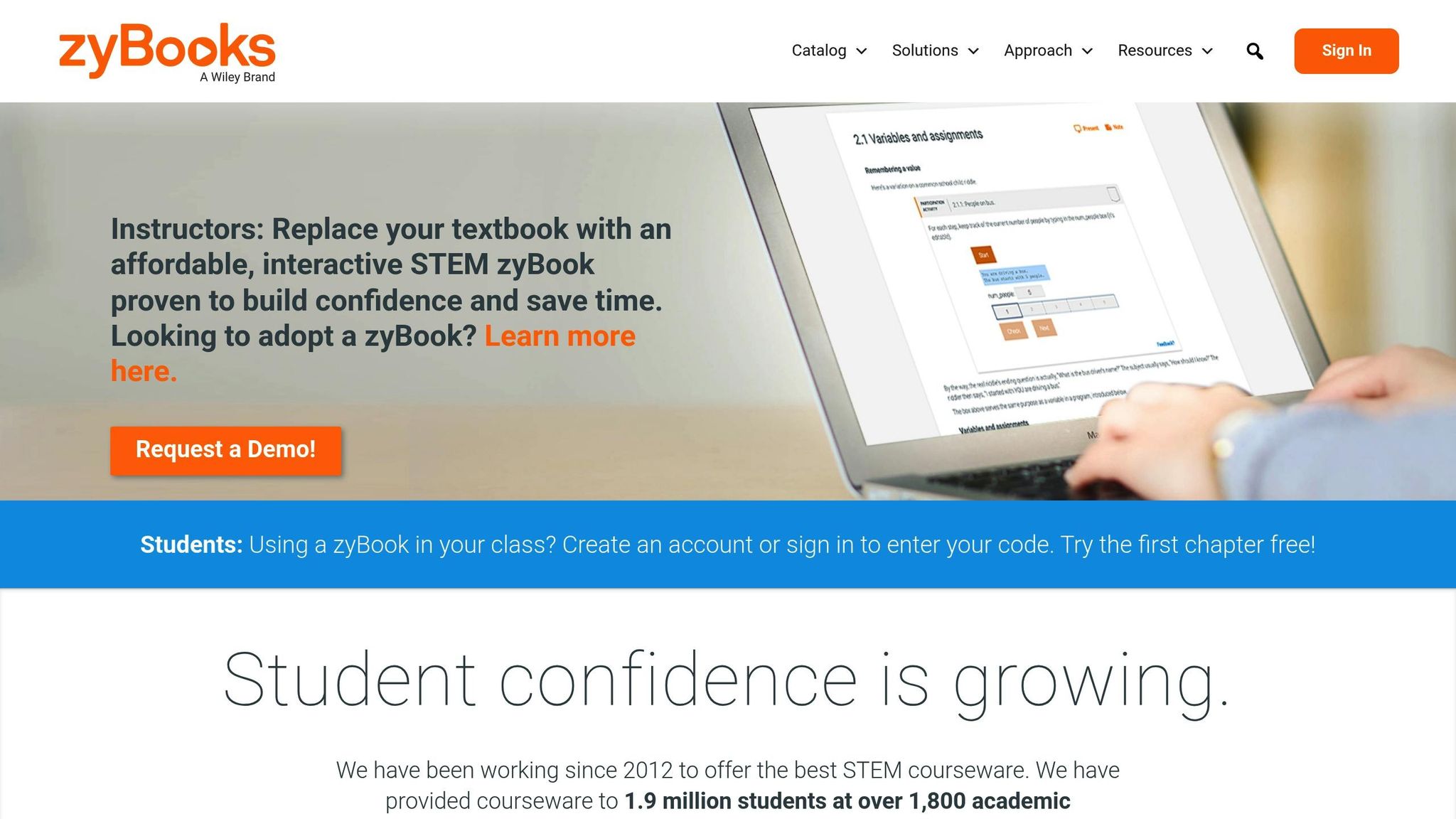Balancing Your Budget: Core vs. Innovation
Startups face a tough choice: how much to spend on running the business (core operations) versus funding future growth (innovation). Here’s the key takeaway:
- Core operations keep the business running, ensuring customer satisfaction, steady revenue, and compliance.
- Innovation projects drive growth through new products, market expansion, and disruptive ideas but come with higher risks and longer timelines for returns.
The goal is to strike the right balance. A common approach is the 70-20-10 model:
- 70% for core operations
- 20% for adjacent growth opportunities
- 10% for transformational innovation
Each startup’s ratio may vary depending on its stage and market. Regular reviews, clear metrics, and tools like AI-powered financial platforms can simplify decision-making and improve resource allocation.
Quick Tip: Prioritize core stability during tough times but shift more toward innovation when opportunities arise. This balance ensures both immediate survival and long-term growth.
Balancing Product, Sales, and Marketing Budgets | Smita Bakshi (zyBooks, acq by Wiley)

Core Operations: Stability and Predictability
Core operations are the backbone of your startup, ensuring everything runs smoothly day after day. They provide the stability your business needs to support a balanced investment strategy. Think of them as the engine that powers your business - without a strong operational foundation, even the most ambitious ideas can fall flat.
Why Core Operations Matter
Investing in core operations brings several key advantages to startups:
- Stable Revenue Streams: By properly funding service, maintenance, and fulfillment, you create predictable revenue. This consistency is invaluable when attracting investors or planning for future expansion.
- Operational Efficiency: A well-structured system minimizes waste, reduces risks like service delays or compliance issues, and ensures every dollar is used effectively.
- Customer Retention: Reliable service and quality products foster customer loyalty. Satisfied customers are more likely to return and recommend your business, reducing the constant pressure to find new clients.
On the flip side, neglecting these crucial areas can lead to serious setbacks.
The Risks of Neglecting Core Operations
Overlooking core operations can expose your startup to a range of challenges:
- Operational Failures: Insufficient funding can lead to breakdowns at the worst possible times - whether it’s during a major product launch, an investor meeting, or peak sales season.
- Customer Dissatisfaction: Delayed deliveries, inconsistent service, or poor product quality can damage your reputation. In today’s hyper-connected world, negative reviews can spread like wildfire.
- Compliance Issues: Weak accounting practices or inadequate security measures can lead to regulatory problems, financial penalties, or even legal trouble.
- Employee Turnover: A lack of tools and resources frustrates employees, making them more likely to leave. High turnover adds to recruitment and training costs, further straining your budget.
Recognizing these risks helps ensure you allocate resources wisely to maintain a strong operational foundation.
Core Operations Budget Essentials
When planning your core operations budget, there are a few critical areas to focus on:
- Payroll and Benefits: Covering salaries and employee benefits is non-negotiable for maintaining a motivated and productive team.
- Infrastructure and Technology: This includes office space, utilities, and the technology needed to keep your business connected and efficient.
- Financial and Legal Management: Professional accounting, tax preparation, compliance, and financial reporting are vital for long-term stability.
- Insurance and Risk Management: Setting aside resources for insurance policies and risk mitigation protects your business from unexpected challenges.
- Customer Service and Support: Investing in systems that enhance customer service ensures retention and builds loyalty.
The key to effective budgeting is aligning these investments with your startup’s current stage and growth plans. Spending too much on non-essential infrastructure can drain resources, while underfunding critical areas leaves your business vulnerable to avoidable risks. By striking the right balance, you can build a solid foundation that supports long-term success.
Innovation Investments: Growth and Differentiation
Keeping your startup running smoothly is crucial, but it's the investments in innovation that fuel growth. By focusing on new products, technologies, or untapped market opportunities, startups can position themselves for expansion. Of course, these ventures come with both potential rewards and inherent risks.
Benefits of Funding Innovation
Putting resources into forward-thinking projects opens doors to new markets and helps create lasting advantages. When a company invests in innovation, it sets itself apart by offering something competitors can't easily replicate. This uniqueness often builds stronger customer loyalty and can lead to sustained profitability.
Beyond market differentiation, successful innovation can generate intellectual property assets that attract investors and potential buyers. Regular investment in new technologies and ideas also equips your business to adapt to changing market conditions, ensuring it stays relevant over time.
However, pursuing innovation isn't without its challenges.
Risks of Prioritizing Innovation
While innovation can lead to growth, it also brings uncertainties, particularly around returns. Unlike core business operations, which tend to produce more predictable outcomes, innovation projects often take longer to show results. This delay can strain financial resources, especially for startups operating on tight budgets.
Another challenge is the potential for resource misallocation. Diverting funds to experimental initiatives may mean cutting back on critical areas like customer service, quality control, or financial management - areas that are vital for maintaining your current business performance.
Finally, there's the opportunity cost. Every dollar spent on untested ideas is a dollar not spent on proven, revenue-generating activities. For startups with limited cash flow, this tradeoff can be particularly difficult to navigate.
Budgeting for Innovation in Startups
Balancing the rewards and risks of innovation requires thoughtful budget management. A good strategy is to adopt a portfolio approach by spreading funds across multiple projects. This increases the chances that at least one initiative will succeed while minimizing the impact of potential failures.
Data-driven decision-making is another essential tool. Develop clear metrics, such as user engagement, prototype performance, or market validation milestones, to regularly evaluate which projects deserve continued funding and which should be reconsidered.
Using a stage-gate process can also help refine your approach. Start small with pilot projects to test ideas and gradually increase funding for those that meet specific success criteria. This method prevents over-investment in unproven concepts while ensuring promising initiatives receive the support they need.
Financial discipline is just as important when budgeting for innovation as it is for core operations. For U.S. startups, Research and Development (R&D) tax credits can be a valuable resource. These credits can offset qualified expenses, including developing new products, refining processes, or creating proprietary software, providing significant savings.
To make the most of these credits, precise expense tracking is critical. This is where tools like Lucid Financials come in handy. Their AI-powered platform automatically identifies and tracks eligible R&D expenses, ensuring you claim every benefit while keeping detailed records for tax purposes. With expert support to handle these complexities, you can direct your energy toward driving innovation.
Ultimately, successful innovation budgeting is about finding the right balance. Dedicate a clear portion of your budget to forward-thinking projects while ensuring your core operations remain well-funded. This balanced approach allows your startup to grow sustainably without compromising its financial health.
sbb-itb-17e8ec9
Balancing Core and Innovation: Practical Frameworks
Striking the right balance between maintaining core operations and pursuing innovation is a challenge for any startup. Practical frameworks can guide how you allocate resources effectively, ensuring stability while fostering growth.
Portfolio Allocation Models
The 70-20-10 innovation model is a widely used strategy for dividing investments. It suggests allocating:
- 70% to core operations
- 20% to adjacent opportunities
- 10% to transformational projects
This model isn’t one-size-fits-all - it can be applied across the entire company or tailored to individual business units based on their maturity and strategic goals.
Pairing this with the Three Horizons model provides even more structure. In this framework:
- Horizon 1 focuses on current core activities.
- Horizon 2 targets new products or markets related to your core business.
- Horizon 3 explores entirely new business models.
The key is to revisit these allocations regularly, ensuring they stay aligned with both performance metrics and changing market conditions.
Evaluating and Adjusting Budget Splits
To keep allocation models effective, regular evaluation and adjustments are essential. Start with ROI analysis to measure success across your allocation categories. Metrics like customer acquisition cost, lifetime value, and operational efficiency improvements can help you determine where to focus resources.
For core operations, strong returns might justify increasing their allocation temporarily. On the other hand, innovation efforts - especially transformational projects - require a different approach. Use scenario analysis to project outcomes under various conditions. This involves creating best-case, worst-case, and most-likely scenarios for each project to evaluate whether the potential rewards justify the investment.
During financial reviews, ask critical questions like:
- Are core operations running efficiently?
- Which adjacent opportunities are performing well?
- Do transformational projects need more funding, or should any be cut?
Market conditions also play a role. In times of economic uncertainty, it may be wise to shift more resources toward core operations to ensure stability. Conversely, when opportunities arise, increasing innovation funding could help you seize the moment. If your cash reserves are tight, prioritize core operations. But with a healthy financial cushion, you can afford to invest aggressively in innovation.
Here’s a quick side-by-side comparison to summarize the differences:
Core vs. Innovation: A Quick Comparison
| Aspect | Core Operations (70%) | Innovation Projects (30%) |
|---|---|---|
| Primary Focus | Maintain and optimize existing business | Explore new opportunities and markets |
| Risk Level | Low to moderate | Moderate to high |
| Timeline for Returns | Immediate to short-term (1–6 months) | Medium to long-term (6 months to 3+ years) |
| Predictability | High – based on historical data | Low – experimental outcomes |
| Cash Flow Impact | Positive and consistent | Often negative initially, with potential high returns later |
| Resource Requirements | Steady, predictable expenses | Variable, often front-loaded investment |
| Success Metrics | Revenue growth, cost efficiency, customer satisfaction | Market validation, prototype performance, IP creation |
| Typical Examples | Customer support, product maintenance, existing marketing | R&D, new product development, market expansion |
| Funding Sources | Operating revenue, working capital | Venture funding, R&D tax credits, grants |
| Risk Mitigation | Process optimization, quality control | Portfolio diversification, stage-gate funding |
Tools to Simplify Implementation
To make managing these frameworks easier, tools like Lucid Financials can automate tracking and reporting. With AI-powered expense categorization and real-time insights, you can monitor your 70-20-10 allocation and adjust quickly based on data. These tools make it simpler to ensure your strategy stays on target as your business evolves.
Tools for Smarter Budget Allocation
Effective budgeting demands tools that not only ensure operational stability but also support growth and innovation. To strike this balance, startups need technologies that can monitor, analyze, and optimize financial decisions in real time. This is where AI steps in, reshaping financial management with its ability to provide instant insights and actionable data.
The Role of AI in Financial Management
AI-driven financial tools offer startups a clear view of their spending habits, automatically organizing expenses, spotting irregularities, and delivering forecasts - without the long wait for monthly reports.
These tools can simulate various scenarios, showing the effects of reallocating budgets or adjusting customer acquisition expenses. This helps startups decide whether to invest in new products or expand existing ones. Real-time reporting means you can create detailed, board-ready presentations on runway, burn rate, and growth projections without the last-minute rush during fundraising.
AI also highlights spending trends, allowing startups to make adjustments early - before small issues grow into major financial problems.
How Lucid Financials Simplifies Resource Allocation

Lucid Financials takes these AI benefits a step further, tailoring its platform specifically for startups. It simplifies the challenge of balancing spending on essential operations and innovation through its AI-powered, full-stack approach. Transactions are automatically categorized, giving you a clear breakdown of how much is allocated to core operations versus innovation.
The platform integrates directly with Slack, enabling quick answers to questions like, "How much have we spent on R&D this quarter?" or "What’s our current runway if we increase marketing spend by $10,000?" For more complex decisions, Lucid also offers access to finance professionals - right within Slack.
Lucid makes optimizing R&D tax credits effortless by identifying eligible expenses automatically. This allows startups to recover part of their innovation spending through federal and state tax credits, freeing up funds to reinvest in growth or essential operations.
With a streamlined seven-day onboarding process, Lucid ensures you can start making informed financial decisions almost immediately. Clean, categorized financial records from day one lay the groundwork for precise budget tracking and analysis.
The platform also provides one-click, board-ready reports, offering insights into runway, burn rate, and performance metrics. These reports help communicate the effectiveness of your financial strategy to both current and prospective investors.
Lucid’s flat pricing model ensures predictable costs, allowing startups to allocate more resources toward growth. Additionally, its AI adapts over time, learning your business’s unique patterns to improve cash flow predictions and uncover new opportunities for optimization. This evolving capability helps you fine-tune the balance between core operations and innovation as your business scales and the market evolves.
Conclusion: Finding the Right Balance
Striking the right balance between core operations and innovation is essential for startups aiming to grow without losing stability. The most successful companies understand that stability and growth are not opposing forces - they complement each other.
To stay agile, consider moving away from rigid annual budgets and instead adopt quarterly reviews. These reviews allow you to adjust resource allocation based on current performance and market shifts. This flexibility becomes especially important when unexpected opportunities or challenges arise.
Involving key teams in financial decisions can lead to better outcomes. When decisions are made collaboratively, rather than through top-down directives, team members gain a clearer understanding of how their efforts impact the company’s financial health.
A flexible budget split can also make a difference. For example, allocating 70–80% of resources to operations, 15–20% to growth, and 5–10% to innovation works well for many companies. However, this ratio should reflect your startup’s stage and market position. Early-stage startups might prioritize innovation more heavily, while scaling companies may need to focus more on building a solid operational foundation.
Establishing financial guardrails - like clear spending limits and defined decision-making authority - helps maintain discipline without compromising agility. This approach ensures you can adapt quickly while keeping financial risks in check.
Tools like AI-powered platforms, such as Lucid Financials, can simplify this process. For instance, they provide real-time insights and answer questions like, “What’s our runway if we increase R&D spending by $15,000?” directly through tools like Slack. These capabilities make budget decisions faster and more informed.
Ultimately, thriving in the long term requires treating financial management as a strategic advantage. Focus on funding value, not activities. Every dollar should drive customer value and measurable business outcomes. By combining this mindset with smart tools and regular financial reviews, you can achieve sustainable growth while staying prepared for future opportunities. Balancing stability and innovation is the foundation of any successful startup strategy.
FAQs
How can startups effectively balance spending between core operations and innovation?
Startups can find a balance between maintaining core operations and pursuing innovation by emphasizing smart resource allocation and making data-informed decisions. Start by assessing potential projects based on their likely impact and ensure your spending aligns with your overall business objectives. Having a flexible budget is crucial - it allows you to adjust to changing priorities or market conditions without losing momentum.
One effective strategy is to divide resources as follows: dedicate 70% to core operations for stability, 20% to adjacent innovations, and 10% to disruptive projects. This approach supports steady growth while encouraging innovation, all without neglecting the essential functions that keep the business running.
For startups aiming to manage finances more efficiently, tools like Lucid Financials can be game-changers. Offering AI-driven insights and real-time reporting, Lucid helps founders stay focused on scaling their business while keeping a clear view of their financial health.
How can startups reduce the risks of focusing their budget on innovation?
Startups looking to manage risks while investing in innovation can benefit from a balanced approach. A popular method is the 80-20 rule, which involves allocating 80% of resources to essential operations and 20% to innovation efforts. This strategy maintains stability while carving out space for new ideas to thrive.
Another helpful approach is adopting a 'fail fast, learn faster' mindset. This means identifying setbacks early, making quick adjustments, and keeping losses to a minimum. Testing new concepts in controlled settings, like pilot programs or sandboxes, can also limit exposure to unexpected challenges. Additionally, regularly evaluating your risk tolerance ensures that your innovation initiatives align with both your current financial situation and long-term objectives.
These methods allow startups to explore innovation thoughtfully without jeopardizing the stability of their core business.
How can the 70-20-10 model be tailored to match a startup's growth stage and market conditions?
The 70-20-10 model works well for startups because it can adjust based on their growth stage and the market landscape. In the early days, on-the-job learning (70%) and mentorship (20%) take center stage. These elements allow founders and teams to develop new skills quickly while encouraging fresh ideas and problem-solving. As the business grows and operations become more organized, there’s room to incorporate more formal training or focus on strategic goals.
Market dynamics also influence how this model is used. During unpredictable times, startups often lean heavily on hands-on learning to remain flexible and adaptable. In contrast, when the market is steady, structured development might take priority, helping to fine-tune processes and scale with greater efficiency. This model’s ability to adapt makes it a useful tool for startups as they navigate different phases of growth and change.


